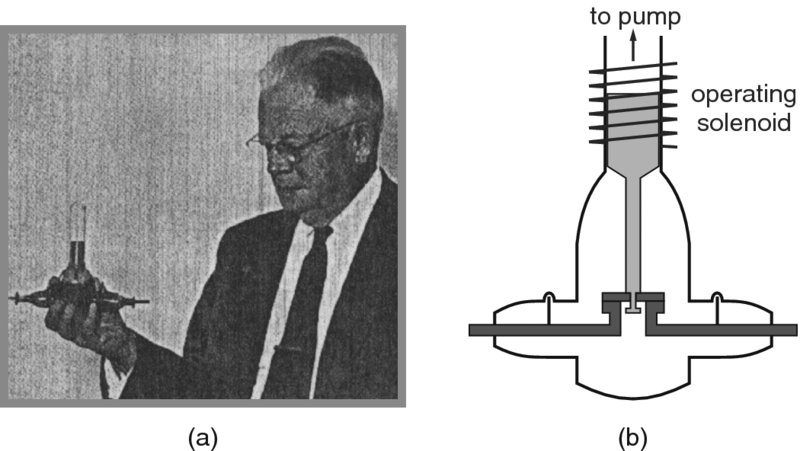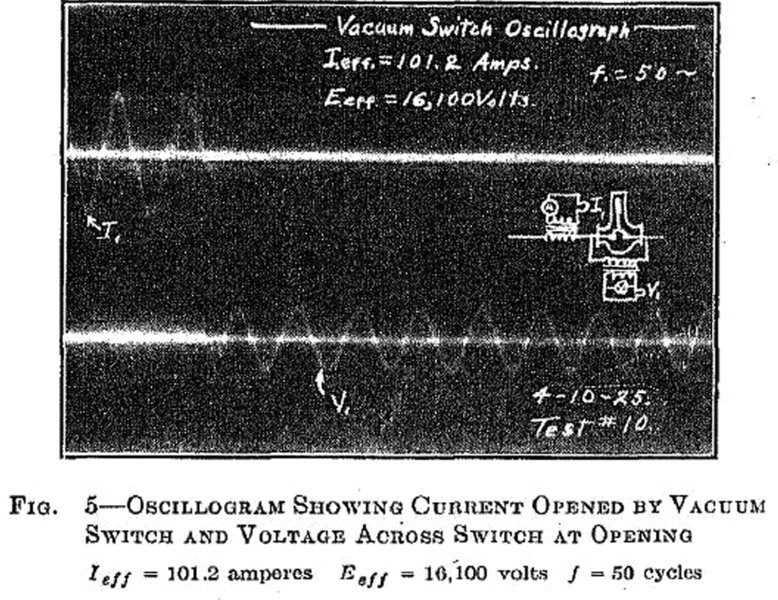8 Current Interruption in Vacuum
8.1 Introduction
Since the first patent from 1890 [1] and the first practical experiments in the 1920s, switching in vacuum has been considered as an effective way to control the power flow in electrical supply networks.
Already in 1926, experiments were carried out to interrupt 101 A at 16 kV by a vacuum switch, shown in Figure 8.1. The results were reported as follows [2]: “A noticeable feature of the vacuum-switch tests is that every oscillographic record shows that the arc produced at the opening of the switch is extinguished at the end of the first half-cycle after the separation of the contacts. Only the very best oil-switch operations give these results.”

Figure 8.1 Schematic drawing of the first vacuum switch with its inventor Dr. Sorensen in 1962.
Figure 8.2 shows the first published oscillogram of current interruption of 101.2 A at a voltage of 16.1 kV.

Figure 8.2 The first published oscillogram of current interruption in vacuum. (Reproduced with permission of IEEE [2]).
The basic principle is that vacuum gives the best-known insulating medium in the steady state since vacuum provides no means to support conduction [3]. Current interruption and dielectric recovery after interruption is achieved due to the natural diffusion of ...
Get Switching in Electrical Transmission and Distribution Systems now with the O’Reilly learning platform.
O’Reilly members experience books, live events, courses curated by job role, and more from O’Reilly and nearly 200 top publishers.

